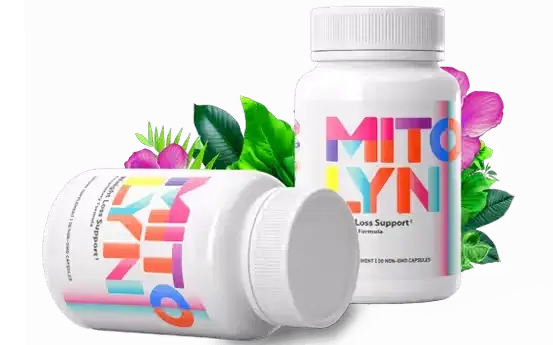
Alice Colls @ mitolyn6574 Member Since: 17 Sep 2025
 United Kingdom
United Kingdom
About Me
Five Killer Quora Answers To Anti-aging cellular repair

Anti-Aging Cellular Repair: Unlocking the Secrets to Vitality
As we age, our cells undergo numerous modifications that can jeopardize our body's capability to repair and regrow itself. Nevertheless, emerging research study in the world of anti-aging and cellular repair offers new insights into ways we may combat the effects of aging. This post checks out the science behind cellular aging, crucial systems associated with cellular repair, and promising methods that might enhance longevity and vitality.
Comprehending Cellular Aging
Cellular aging, also referred to as senescence, is a complicated process influenced by a variety of factors. As cells divide and duplicate with time, they build up damage due to environmental stressors, metabolic processes, and even the intrinsic biological clock called telomeres-- protective caps on completions of chromosomes that reduce with each cellular division.
Key Factors Contributing to Cellular Aging
| Element | Description |
|---|---|
| Telomere shortening | As cells divide, telomeres shorten, leading to eventual cell senescence or apoptosis (set cell death). |
| Oxidative stress | The accumulation of oxidative damage from complimentary radicals can hurt cellular components like DNA, proteins, and lipids. |
| Mitochondrial dysfunction | Mitochondria, the powerhouses of the cell, can lose their efficiency, resulting in reduced energy production and increased apoptosis. |
| Inflammation | Chronic inflammation, typically described as "inflammaging," can lead to cellular dysfunction across several systems. |
The Mechanisms of Cellular Repair
Cells have actually developed a number of systems to combat damage and promote repair. Comprehending these systems is essential for utilizing their potential in anti-aging therapies.
Secret Mechanisms of Cellular Repair
| System | Description |
|---|---|
| Autophagy | A procedure where cells eliminate harmed parts and recycle cellular products. |
| DNA Repair | Different systems, such as base excision repair and nucleotide excision repair, help fix DNA damage. |
| Cellular Senescence | While some cells enter a state of senescence as a protective system, the build-up of senescent cells can add to aging. |
| Stem Cell Activation | Stem cells can renew harmed or lost cells, contributing to tissue repair and regrowth. |
Techniques for Enhancing Cellular Repair
A variety of techniques can potentially improve cellular repair mechanisms, eventually intending to decrease the aging process. Here are some effective techniques:
1. Nutrition
A balanced diet plan rich in antioxidants can combat oxidative tension and boost cellular stability. Foods high in vitamins C and E, polyphenols, and omega-3 fatty acids use protective advantages.
2. Exercise
Routine exercise has actually been revealed to improve mitochondrial function and promote autophagy, resulting in enhanced cellular health.
3. Sleep
Appropriate sleep is crucial for repair procedures, consisting of DNA repair and protein synthesis. Poor sleep can intensify the effects of aging, making corrective sleep vital.
4. Stress Management
Chronic stress can result in swelling and accelerate aging. Techniques like mindfulness, yoga, and meditation can assist reduce these effects.
5. Supplements
Particular supplements reveal promise in promoting cellular repair. For example:
| Supplement | Possible Benefits |
|---|---|
| Resveratrol | May enhance autophagy and decrease inflammation. |
| NAD+ precursors (e.g., NMN, NR) | Can support mitochondrial function and increase durability. |
| Curcumin | Has anti-inflammatory residential or commercial properties and may promote cellular repair. |
Cutting-Edge Research and Therapies
Current clinical advancements are checking out unique interventions to target cellular aging and empower repair mechanisms.
1. Senolytics
These drugs selectively eliminate senescent cells, which have been discovered to contribute to age-related illness. Research studies suggest that clearing these cells might reverse some aspects of aging.
2. Gene Therapy
Gene editing methods like CRISPR deal possible opportunities for repairing faulty genes connected with aging and boosting cellular repair mechanisms.
3. Telomere Extension
Research is ongoing in techniques to extend telomeres, possibly reversing cellular aging procedures.
FAQ: Your Anti-Aging Cellular Repair Questions
Q1: What are the signs of cellular aging?
Common indications of cellular aging consist of fatigue, decreased flexibility to tension, increased vulnerability to illness, slower recovery processes, and the advancement of persistent conditions.
Q2: Can lifestyle modifications truly impact aging at the cellular level?
Absolutely! Way of life aspects such as diet, workout, sleep, and stress management substantially affect cellular health and aging processes.
Q3: Are there threats associated with anti-aging therapies?
Just like any treatment, there are potential risks involved. Senolytics and gene treatments are still in the experimental stage, and long-lasting effects are not completely understood.
Q4: How important is nutrition for cellular repair?
Nutrition plays a crucial role. Diet plans abundant in anti-oxidants and anti-inflammatory foods can nurture cells and protect against damage, promoting reliable repair mechanisms.
Q5: What role does hydration play in cellular health?
Correct hydration is essential for cellular function. Water assists transfer nutrients, cleanse the body, and preserve optimum cellular conditions, contributing to overall health and repair.
The mission for anti-aging cellular repair is more than just a pursuit for vibrant appearance; it's about improving life's quality and durability. As research study advances, we acquire deeper insights into how our cells age and the ingenious techniques we can employ to revitalize them. By welcoming a holistic method-- prioritizing nutrition, way of life, and innovative therapies-- people can take meaningful steps towards optimal cellular health and vigor. As the landscape of anti-aging continues to develop, the future holds appealing chances for humans to grow at every age.

